Kurukshetra Summary: March 2025 | Current Affairs & Hindu Analysis: Daily, Weekly & Monthly - UPSC PDF Download
Union Budget 2025-26: Development Dimensions
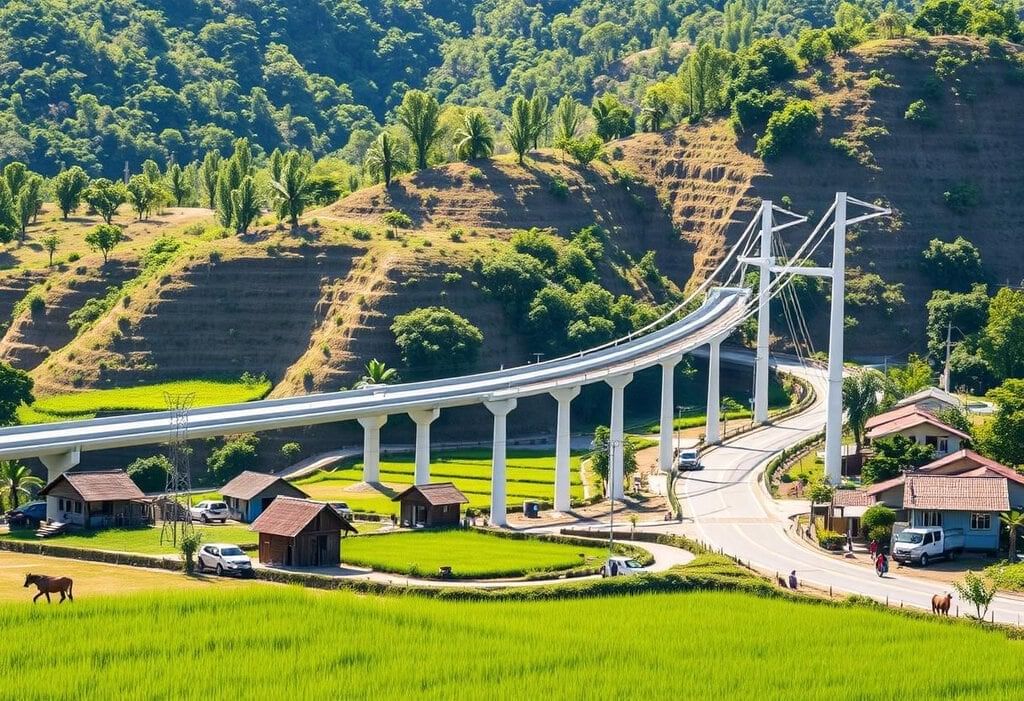 Sustainable Growth
Sustainable Growth
The Economic Survey 2024-25 presented in Parliament, highlighted India’s steady economic growth despite challenges in global manufacturing, particularly in Europe and Asia. There were expectations for the budget to prioritize income growth, job creation, infrastructure development, and a conducive environment for business expansion.
- The Union Budget 2025-26 aligns with the Economic Survey 2024-25, emphasizing consistent growth amidst global manufacturing difficulties and supply chain disruptions.
- It prioritizes rural development, agriculture, and inclusive growth to realize the vision of Viksit Bharat by 2047. This vision aims to position India as a developed, global economic leader, with a focus on sustainability and equity.
Key Budget Highlights
 Sustainable Progress
Sustainable Progress
- Increased Allocation and Development Focus:Total spending is set at Rs. 50.65 lakh crore for 2025-26, an increase from Rs. 47.16 lakh crore in 2024-25. Effective capital expenditure is projected at Rs. 15.48 lakh crore for 2025-26, up from Rs. 10.18 lakh crore in 2024-25. The initiative of 'Viksit Bharat 2047' aims for sustainable and inclusive growth through improved infrastructure, social welfare projects, and economic reforms. Rural Development Allocation is set at Rs. 1.87 lakh crore, reflecting a 5.75% increase from 2024-25.
- Sectoral Allocations and Priorities:Skill Development and Entrepreneurship has seen a significant increase of 35%, highlighting its priority. Other notable increases include: Rural Development (5.7%), Micro, Small and Medium Enterprises (MSME) (4.7%), Agriculture and Farmers’ Welfare (3.9%), Women and Child Development (3.1%).Rs. 3.83 lakh crore has been allocated for food and fertiliser subsidies, rural development, employment, and skill programmes.
1. Agriculture & Farmers’ Welfare
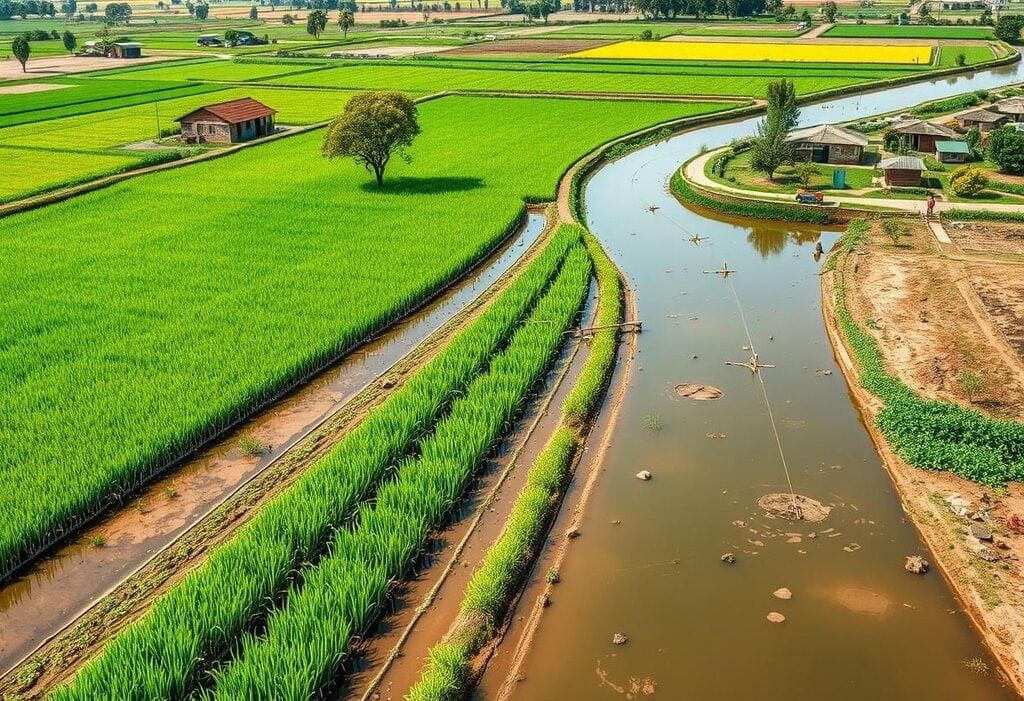 Sustainable Agriculture
Sustainable Agriculture
- PM Dhan-Dhaanya Krishi Yojana: This initiative aims to promote holistic agricultural development across 100 districts.
- The focus is on diversifying crops, implementing sustainable farming practices, enhancing irrigation, developing post-harvest infrastructure, and improving farmers' access to credit.
- Reduction in Urea Subsidy: There is a shift towards nutrient-based subsidies to encourage organic farming and enhance soil health.
- PM Krishi Sinchai Yojana (PMKSY): An allocation of Rs. 8,260 crore is designated for improving irrigation and water conservation efforts.
2. Food Processing & Rural Enterprises
- PM Formalization of Micro Food Processing Enterprises (PMFME) Scheme: This scheme aims to upgrade technology, enhance quality, and establish market linkages for micro food processing enterprises.
3. Rural Employment & Livelihoods
- MGNREGA: Funding is maintained at Rs. 86,000 crore, with an emphasis on improving implementation and asset creation.
- DAY-NRLM: Funding is increased by 26.3% (Rs. 19,005 crore) to support women’s entrepreneurship and skill development initiatives.
Conclusion
The Budget for 2025-26 reflects India’s dedication to rural development, agriculture, infrastructure, and investment in human capital. The increased funding aims to enhance productivity, create jobs, foster entrepreneurship, and support sustainable growth. This aligns with the long-term vision of ‘Viksit Bharat 2047,’ which seeks to transform India into a developed nation by the 100th anniversary of its independence.
Government Initiatives to Boost Rural Economy
The rural economy is crucial for India’s employment and GDP. The government is focusing on promoting inclusive growth and improving livelihoods through agriculture, MSMEs, fisheries, and self-reliance schemes.
- Key measures include improving rural infrastructure, boosting consumption, and implementing fiscal policies to enhance economic activities.
Government's Fiscal Strategy for Economic Growth
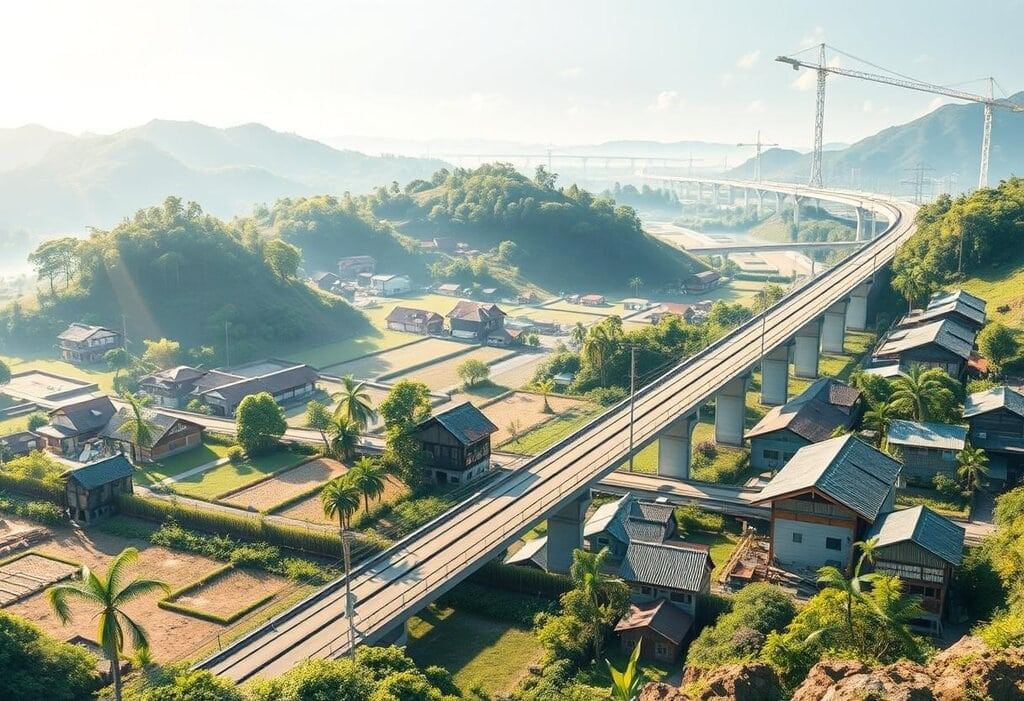 Sustainable Development
Sustainable Development
The government is focused on boosting economic growth by enhancing revenue collection and increasing public expenditure. By aiming for a higher tax collection target, the government can fund more public spending, which is essential for driving demand in a consumption-based economy like India.
Taxation and Revenue Targets
For the fiscal year 2025-26, the government has set an ambitious revenue collection target of Rs. 42.70 lakh crore, reflecting an 11% increase from the previous year. The breakdown of this target is as follows:
- Direct Tax Collection Target: Rs. 25.20 lakh crore (from income tax and corporate tax ).
- Indirect Tax Collection Target: Rs. 17.50 lakh crore (from GST, excise duty, and customs ).
Increasing tax revenues creates more fiscal space for public investment, enabling the government to allocate additional funds towards rural development initiatives, infrastructure projects, and welfare programmes.
Economic Growth and Challenges Ahead
 Rural Prosperity
Rural Prosperity
Present Growth Forecasts
The National Statistical Office (NSO) and the Reserve Bank of India (RBI) project India's GDP growth rate as follows:
- 2024-25: 6.4% (NSO), 6.6% (RBI).
- 2025-26: 6.7% (RBI).
Despite positive growth indicators, the economy has slowed down in the past two quarters, indicating a need for strong interventions in investment, consumption, and exports to achieve sustainable long-term growth.
Key Concerns
- Declining rural demand: Particularly in regions dependent on agriculture.
- Slow growth in the MSME and informal sectors: This is affecting job creation and economic activity.
- Supply chain bottlenecks: Issues in logistics and storage are hindering smooth operations.
To address these challenges, the government has initiated various programs aimed at increasing farmers' income, supporting agro-industries, and enhancing financial access for rural entrepreneurs.
Budgetary Measures to Strengthen the Rural Economy
 Sustainable Agriculture
Sustainable Agriculture
1. Increased Allocation for Agriculture and Allied Sectors
The government has allocated Rs. 2.66 lakh crore for agriculture and related sectors, which is an increase of Rs. 1000 crores from the previous year. The aim is to enhance agricultural productivity, improve market access, and ensure fair prices for farmers.
Key initiatives include:
2. Expansion of Kisan Credit Card (KCC) Loans
- The KCC loan limit has increased from Rs. 3 lakh to Rs. 5 lakh, benefiting 7.75 crore farmers across the country.
- This initiative provides farmers with easier access to credit at lower interest rates, helping them manage costs, invest in better technology, and alleviate financial stress.
3. Pradhan Mantri Dhan-Dhan Krishi Yojana
- The scheme targets 100 low-yield districts to improve productivity through:
- Financial assistance for quality seeds, fertilizers, and irrigation.
- Enhanced storage and logistics to prevent post-harvest losses.
- Improved market access to ensure fair prices for farmers.
- This initiative aims to support 1.7 crore farmers and reduce agricultural disparities across regions.
4. Cotton and Pulses Missions
- 5-year Cotton Technology Mission:
- Aims to improve cotton quality and yield through high-yield seed varieties and better irrigation methods.
- 6-year Pulses Mission:
- Focuses on achieving self-sufficiency in pulses like tur, urad, and masoor.
- Includes a 100% procurement guarantee through NAFED and NCCF to ensure price stability for farmers.
5. Boosting the Fisheries Sector
The government is implementing measures to enhance the fisheries sector, where India is the second-largest producer of aquaculture fish. These measures include:
- Establishing Special Economic Zones (SEZs) for fisheries to boost exports and create job opportunities.
- Providing subsidised credit and infrastructure development for fishermen.
These initiatives aim to improve inland and marine fisheries, thereby increasing job prospects in rural areas.
6. Promoting MSMEs and Ease of Doing Business
The government recognises the importance of Micro, Small, and Medium Enterprises (MSMEs) in creating jobs in rural and semi-urban areas. To support these enterprises, the government plans to:
- Simplify business regulations to encourage the establishment of new enterprises.
- Expand financial assistance through subsidised credit schemes and digital banking services.
- Support rural industries such as handicrafts and food processing to enhance local employment opportunities.
The focus is on improving access to credit and simplifying compliance requirements, empowering small businesses in rural regions.
7. Self-Reliance in Urea Production
- To reduce dependence on imports and ensure an affordable supply of fertilisers, the government has proposed:
- Establishing new urea manufacturing plants.
- Aiming to stabilise fertiliser prices for farmers.
- Promoting the use of nano-fertilisers to improve soil health.
This initiative is in line with the Atmanirbhar Bharat vision, aiming to lower costs for farmers while ensuring a consistent supply of fertilisers.
The government’s strategy for the rural economy focuses on enhancing agriculture, MSMEs, fisheries, infrastructure, and financial empowerment. With increased budget support, improved credit access, and productivity enhancements, the aim is to raise incomes, generate jobs, and strengthen rural industries. Effective implementation of these measures can foster sustainable growth, narrow the rural-urban divide, and contribute to India’s goal of a $5 trillion economy.
Budgetary Efforts for Empowering Women in India
 Empowered Women
Empowered Women
Empowering women is crucial for ensuring inclusive growth, fostering gender equality, and promoting economic participation. Budget allocations that support women are vital for achieving these objectives. In India, Gender-Responsive Budgeting (GRB) has been implemented to allocate resources effectively for the development of women.
Gender Budgeting in India
- Gender Budgeting (GB) was introduced in 2005-06 as an analytical tool to assess the impact of government budgets on women and to promote gender equity.
- The primary goal of GB is to plan, allocate, and audit public spending in a way that addresses gender disparities across various sectors.
Objectives of Gender Budgeting
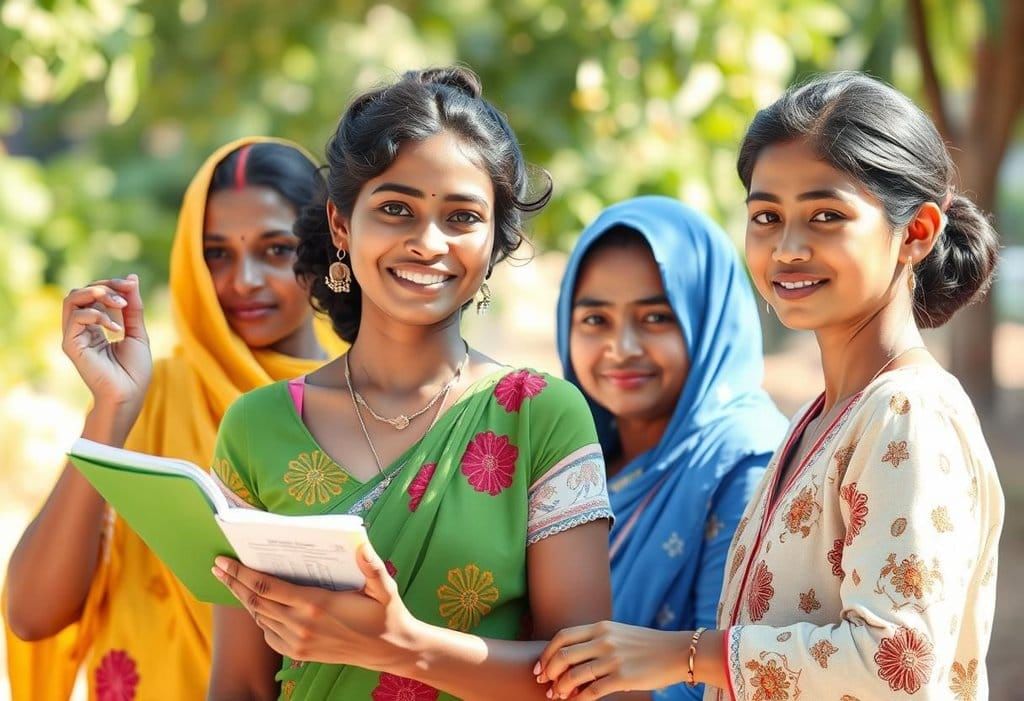 Empowered Women
Empowered Women
- Increasing the involvement of women in economic activities.
- Ensuring improved access to education, healthcare, and social welfare programs.
- Bridging gender gaps in workforce participation and wages.
- Reinforcing institutional frameworks for gender mainstreaming in policies.
Key Budgetary Initiatives for Women Empowerment
1. Beti Bachao Beti Padhao (BBBP)
Initiated in 2015, this program aims to address the declining child sex ratios and promote the education of girls. The initiative functions through coordinated efforts involving the education, health, and social sectors.
2. National Mission for Empowerment of Women (NMEW)
This comprehensive scheme seeks to enhance collaboration among various ministries to effectively create, implement, and monitor programs aimed at empowering women.
3. Pradhan Mantri Matru Vandana Yojana (PMMVY)
This conditional cash transfer scheme offers financial assistance to pregnant and lactating women to improve their health and nutrition.
4. Mahila Shakti Kendra (MSK)
This initiative provides skill development, employment opportunities, and digital literacy training specifically tailored for rural women.
5. One Stop Centres (OSCs)
These centres are established to offer integrated support to women facing violence, including legal aid, medical assistance, and counselling services.
6. Working Women Hostel Scheme
This scheme aims to provide safe and affordable housing for working women, particularly in urban areas.
7. National Creche Scheme
This scheme supports working mothers by offering daycare services for their children, facilitating increased participation of women in the workforce.
8. Support to Training and Employment Programme for Women (STEP)
This program focuses on enhancing women’s skills through vocational training, thereby increasing their employability across various sectors.
Effects of Gender Budgeting
 Empowered Women
Empowered Women
Gender budgeting plays a crucial role in promoting gender equality and empowering women. Here are the key impacts:
- Increased Female Workforce Participation: Initiatives such as MGNREGA and Mudra Yojana have created more job opportunities for women, leading to higher participation in the workforce.
- Improved Health Outcomes: Recent reports indicate a reduction in maternal mortality rates by X% over the past Y years, attributed to healthcare schemes like PMMVY and Janani Suraksha Yojana.
- Enhanced Financial Inclusion: There has been a rise in women-led businesses, facilitated by credit initiatives under Stand-Up India and self-help group (SHG) programs.
- Reduction in Gender-Based Violence: Programs such as One-Stop Centres (OSCs) and the Women Helpline have strengthened systems to protect women's rights and reduce gender-based violence.
Challenges
- There has been notable progress, but several challenges remain, including insufficient budget allocation.
- Efforts are hindered by a lack of awareness among rural women.
- There is also poor monitoring and evaluation of initiatives.
- Furthermore, entrenched societal barriers continue to obstruct progress towards gender responsiveness.
Moving Forward
 Empowerment Initiatives
Empowerment Initiatives
- Increasin g Budget Allocation:. greater portion of GDP should be allocated to programs specifically aimed at women.
- Strengthening Institutional Frameworks: It is crucial to improve governance and ensure that policies take gender issues into account.
- Capacity Building and Awareness: Community campaigns and digital training initiatives can help bridge information gaps.
- Incentivizing Women’s Participation: Policies should actively encourage and support women in business and leadership positions.
Financial initiatives focused on empowering women are essential for achieving inclusive and sustainable growth. While progress has been made, there is a need for better resource allocation, effective implementation, and societal changes to reduce gender disparities. A comprehensive approach that combines policy reforms with financial support will help ensure that women play an equal role in India’s economic and social development.
Strengthening Healthcare Infrastructure and Access
 Health Innovation
Health Innovation
The Union Budget 2025-26 demonstrates the government's dedication to improving healthcare access and infrastructure. This includes increased funding for medical education, cancer care, digital health projects, and the promotion of medical tourism.
Key Budgetary Allocations and Initiatives
1. Increased Health Budget
- The Ministry of Health and Family Welfare has received Rs. 99,858.56 crore, marking an 11% increase from the previous year.
- Within this, Rs. 95,957.87 crore is allocated for the Department of Health & Family Welfare, and Rs. 3,900.69 crore for the Department of Health Research.
2. Medical Education Expansion
- The government plans to add 10,000 new medical seats this year, with a goal of 75,000 new seats over the next five years.
- This initiative aims to address the shortage of doctors and improve public healthcare, particularly in rural areas.
3. Cancer Care and Day-Care Cancer Centres
- The establishment of 200 district-level day-care cancer centres within three years is expected to improve treatment access in tier-2 and tier-3 cities.
- This initiative aims to reduce the financial burden on patients and decentralise healthcare services.
4. Ayushman Bharat Initiative
- Ayushman Arogya Mandir: Focus on creating wellness centres that prioritise preventive care and early diagnosis.
- PM-JAY (Ayushman Bharat Yojana): Increased funding to enhance financial protection against major health expenses, covering Rs. 5 lakh per family each year.
- PM-ABHIM (Health Infrastructure Mission): Strengthening critical care units, public health laboratories, and disease tracking systems, with Rs. 4,758 crore allocated.
- Ayushman Bharat Digital Mission (ABDM): Promoting the use of digital health records to improve healthcare access.
5. Medical Tourism and Global Healthcare Hub
- The “Heal in India” initiative aims to streamline visa processes, enhance medical facilities, and foster partnerships between public and private sectors.
- This initiative seeks to enhance India's reputation as a global hub for quality healthcare services.
6. Social Security for Gig and Platform Workers
- Identity cards and registration on the e-Shram portal will help formalise gig workers.
- Health coverage under PM-JAY will provide medical security.
- This initiative aims to offer potential pensions and social welfare benefits to improve financial stability.
7. Customs Duty Exemptions for Life-Saving Drugs
- 36 life-saving medicines will be fully exempt from basic customs duty.
- 6 additional medicines will have a reduced customs duty of 5% to make essential drugs more affordable.
Significance and Implications
 Digital Health Innovation
Digital Health Innovation
- Increases the number of doctors: This initiative aims to enhance India's medical education system by producing more qualified doctors.
- Makes cancer care more accessible: By expanding cancer care facilities, the pressure on hospitals in major cities will be alleviated, making treatment more available to a larger population.
- Enhances digital health systems: The focus on digital health improvements will lead to better patient records and more accurate diagnoses, streamlining healthcare processes.
- Increases medical tourism: By boosting the quality and accessibility of healthcare, India aims to attract more international patients, which will enhance foreign earnings and encourage healthcare investments.
- Provides financial protection for vulnerable groups: The budget aims to offer financial safeguards for vulnerable populations, including gig workers and disadvantaged patients, ensuring they have access to necessary healthcare without financial strain.
The Union Budget 2025-26 presents a holistic approach to healthcare, integrating infrastructure development, medical education, digital advancements, and financial inclusion. This comprehensive strategy aligns with the goal of universal health coverage, reinforcing India's commitment to building a robust and inclusive healthcare system for the future.
Union Budget 2025-26: Focus on Swachh Bharat and Jal Jeevan Missions
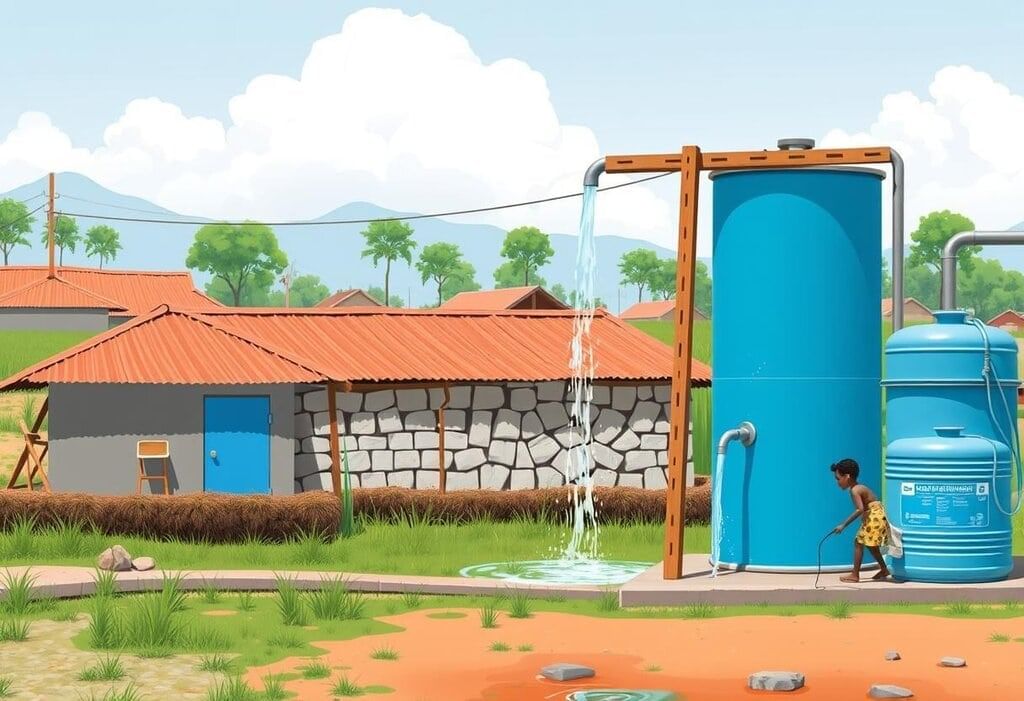 Sustainable communities
Sustainable communities
The Union Budget for 2025-26 emphasizes crucial initiatives like the Swachh Bharat Mission (SBM) and the Jal Jeevan Mission (JJM) to advance India's goal of universal sanitation and access to clean water.
Swachh Bharat Mission (SBM)
- Increased Allocation: The SBM has received a budget of Rs X crore, reflecting a Y% increase from the previous year. This funding aims to achieve 100% solid and liquid waste management in both rural and urban areas.
- Urban Sanitation Drive: There is a strong emphasis on urban sanitation, with incentives for waste segregation at the source, waste-to-energy projects, and proper landfill management.
- ODF Plus Villages: The government is dedicated to making villages Open Defecation Free (ODF) Plus, focusing on greywater management and the treatment of faecal sludge.
- Behavioural Change Initiatives: There is a renewed focus on campaigns aimed at changing behaviours through community-driven awareness programmes to sustain sanitation improvements.
Jal Jeevan Mission (JJM)
- Higher Budgetary Support: The JJM, which aims to provide piped water to every rural household by 2026, has been allocated Rs Z crore, an increase from Rs W crore the previous year.
- Technology Integration: Funds have been designated for sensor-based monitoring of water supply, facilitating real-time data collection for improved transparency and efficiency.
- Climate-Resilient Water Supply:. significant portion of the budget is allocated for developing climate-resilient infrastructure, including rainwater harvesting systems and groundwater recharge initiatives.
- Capacity Building and Skilling: Training programmes for local water management committees have been expanded to enhance community ownership and maintenance of water systems.
Significance of Sanitation and Water Supply Initiatives
 Sustainable Health Solutions
Sustainable Health Solutions
- Enhancements in Health and Hygiene: Improved sanitation and access to clean water significantly reduce the risk of waterborne diseases, leading to an overall enhancement in public health.
- Environmental Sustainability: Effective waste management and efficient water conservation are crucial for fostering a sustainable environment.
- Equity Between Rural and Urban Areas: The budget ensures that both rural and urban regions benefit from sanitation and water supply projects, helping to reduce disparities in public services.
- Job Creation: Infrastructure projects under the Swachh Bharat Mission (SBM) and Jal Jeevan Mission (JJM) generate employment opportunities, particularly in rural areas, through construction and maintenance activities.
Challenges and the Way Forward
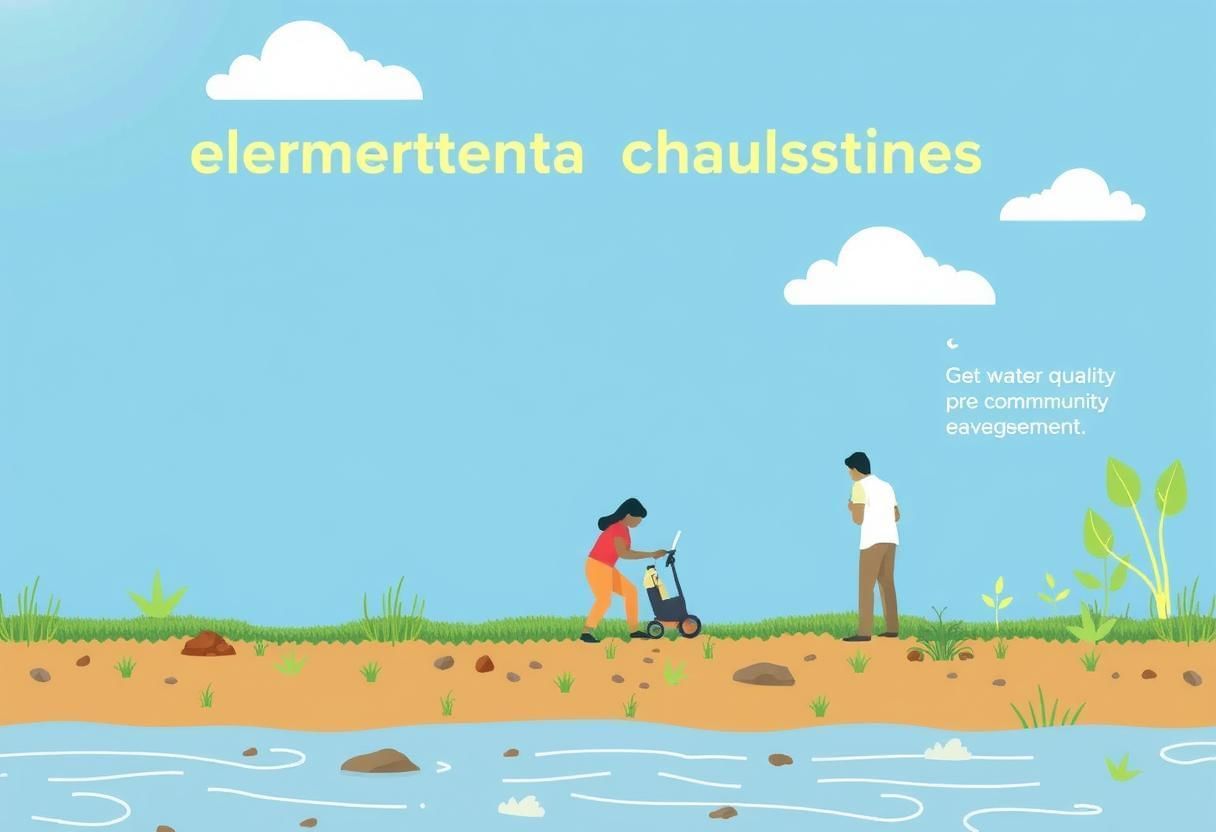 Sustainable Solutions
Sustainable Solutions
- Implementation Gaps: Despite increased funding, challenges such as delays in fund disbursement and project implementation need to be addressed.
- Quality Assurance: Ensuring the quality of water and maintaining sustainable sanitation practices is crucial, necessitating stronger monitoring and evaluation mechanisms.
- Community Participation: Greater community involvement is essential for the long-term sustainability of these initiatives.
- Innovative Financing Models: Leveraging public-private partnerships (PPP) and international funding can help bridge financial gaps.
The Union Budget 2025-26 reaffirms the government’s commitment to improving sanitation and water access through the Swachh Bharat and Jal Jeevan Missions. While the increase in funding and policy focus is praiseworthy, success hinges on effective implementation, quality assurance, and active community engagement. A holistic approach will significantly enhance public health, environmental sustainability, and socio-economic progress in India.
|
38 videos|5200 docs|1093 tests
|
















